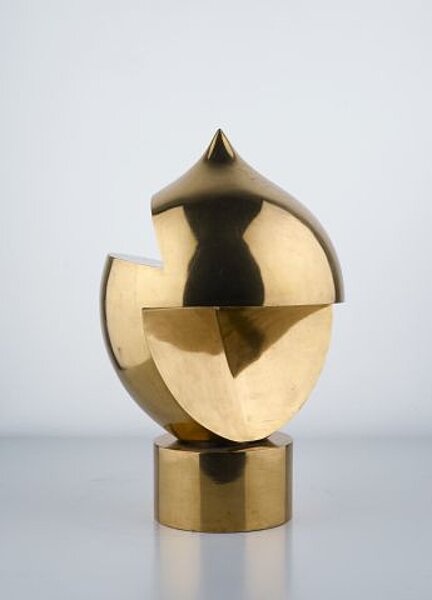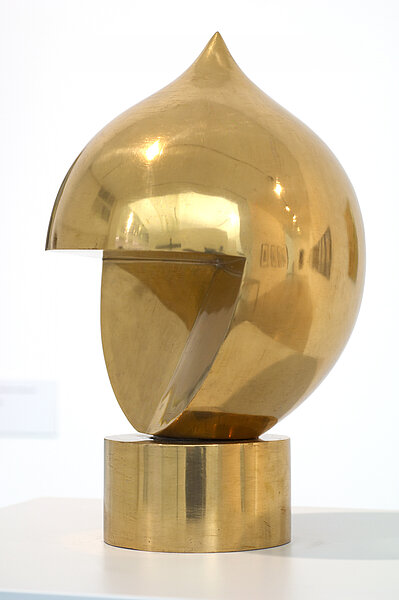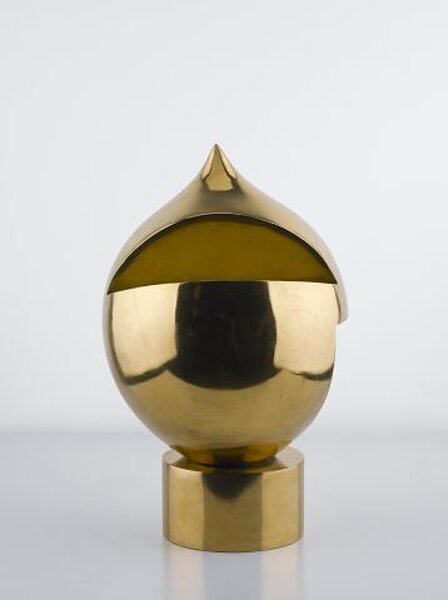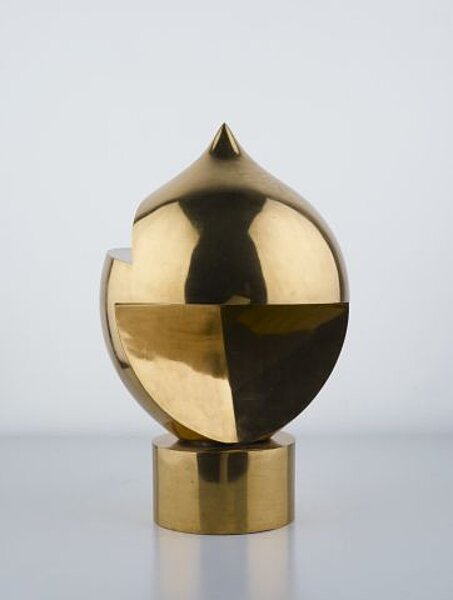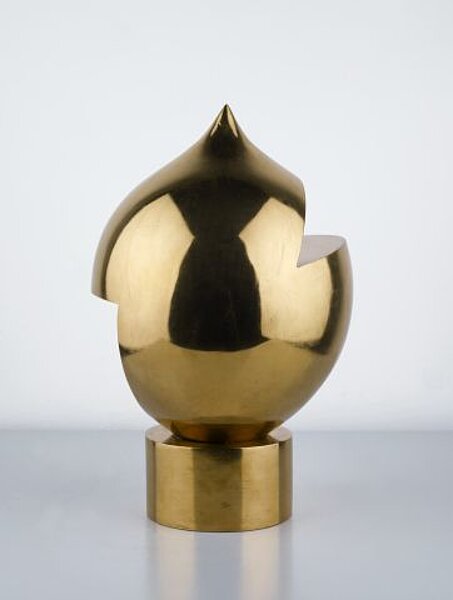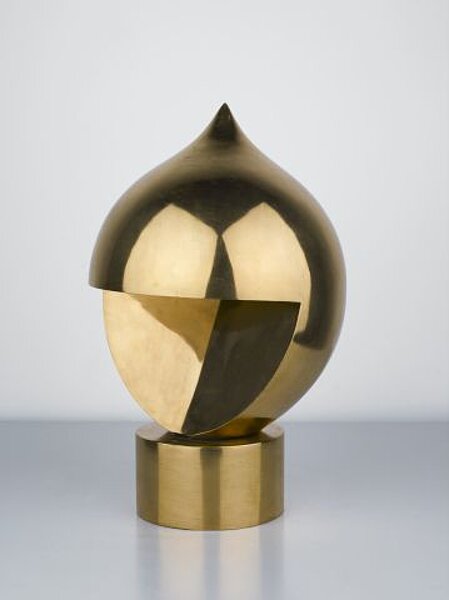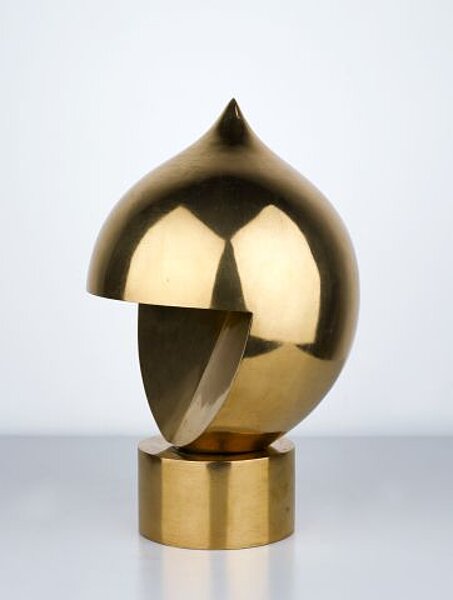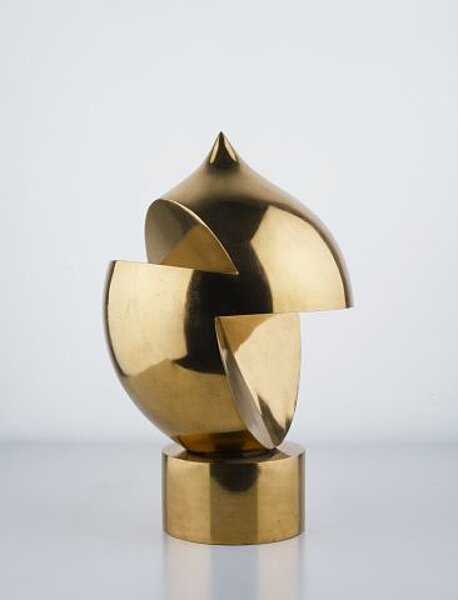
Taeuber-Arp, Sophie
Kopf
Head
1937
| Object description | Bronze casting |
|---|---|
| Object category | sculpture |
| Material |
object:
bronze
|
| Technique |
object:
bronze casting
|
| Dimensions |
object size:
height: 33 cm,
width: 21 cm,
depth: 21 cm
object:
weight: 10,2 kg
|
| Year of acquisition | 1962 |
| Inventory number | P 27/0 |
| Creditline | mumok - Museum moderner Kunst Stiftung Ludwig Wien |
| Rights reference | Gemeinfrei | public domain |
| Further information about the person | Taeuber-Arp, Sophie [GND] | Taeuber-Arp, Sophie [ULAN] |
| Literature | Laboratorium Moderne/Bildende Kunst, Fotografie und Film im Aufbruch |
Swiss artist Sophie Taeuber-Arp arrived at a new form of expression via Cubism. By 1916 Taeuber-Arp’s painting was already completely non-representational and her “vertical-horizontal compositions” are among the first concrete or constructive artworks of modernity. Her paintings, reliefs and sculptural works, with their predominantly geometrical elements, radiate order and harmony. The circle was her preferred form — it first appeared in 1917 and lasted into her final compositions. The 1937 bronze sculpture “Head” is a spatial development of her reliefs. The basic form is a sphere. The flat, round pedestal takes the rounded form into itself, the cupola bears a pointed and tapering addition. The volume is divided by two differently-sized notches: one opens downwards, the other upwards. The lower one accounts for almost a quarter of the sphere’s volume and enables an in-depth view of the interior of the sculpture. The long axis becomes visible because of the negative form. This draws attention to the top of the piece and acts to equalize the dominant horizontal edge.
© mumok – museum moderner kunst stiftung ludwig wien
